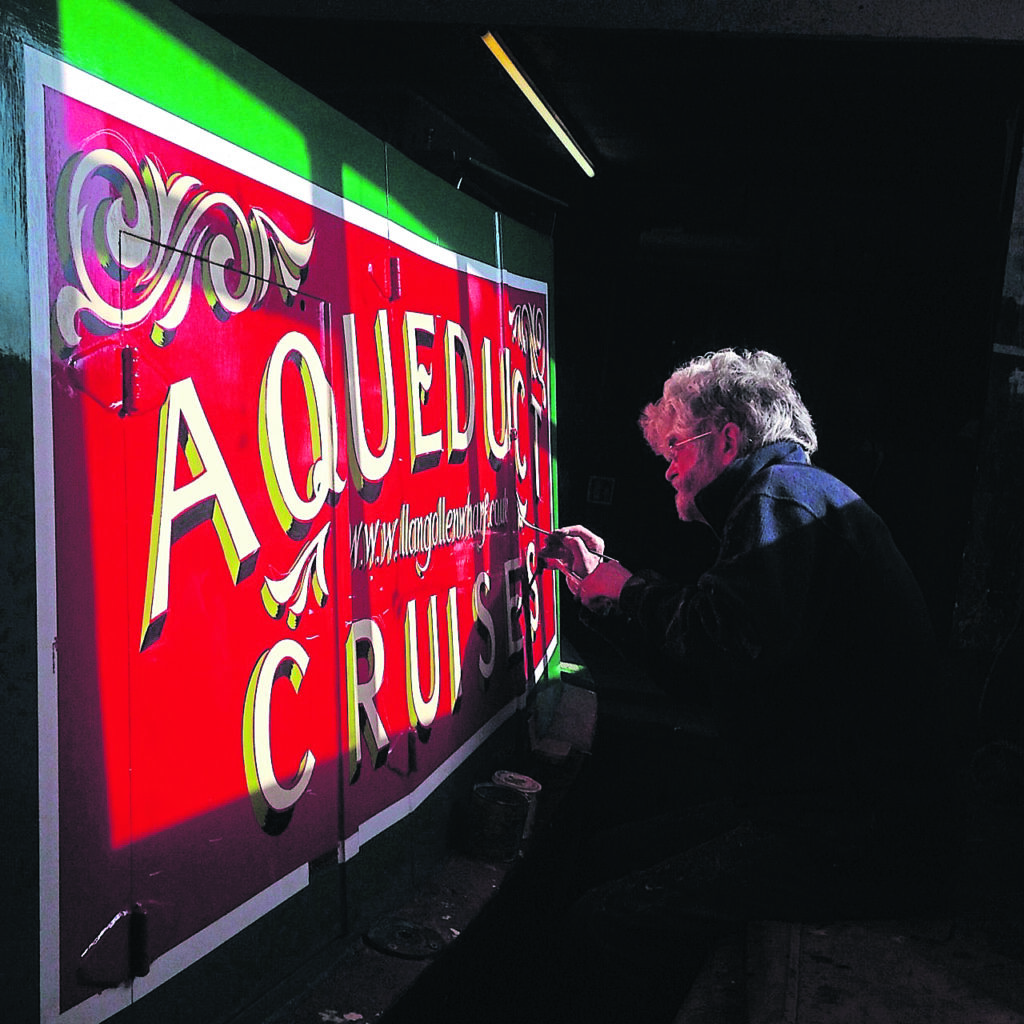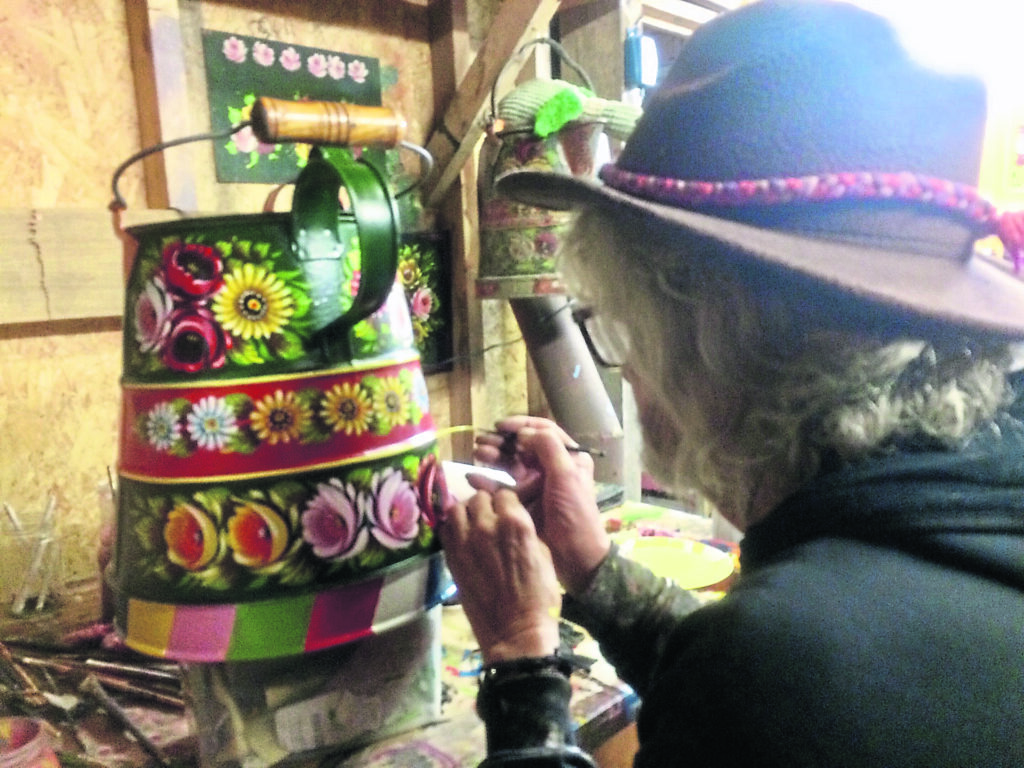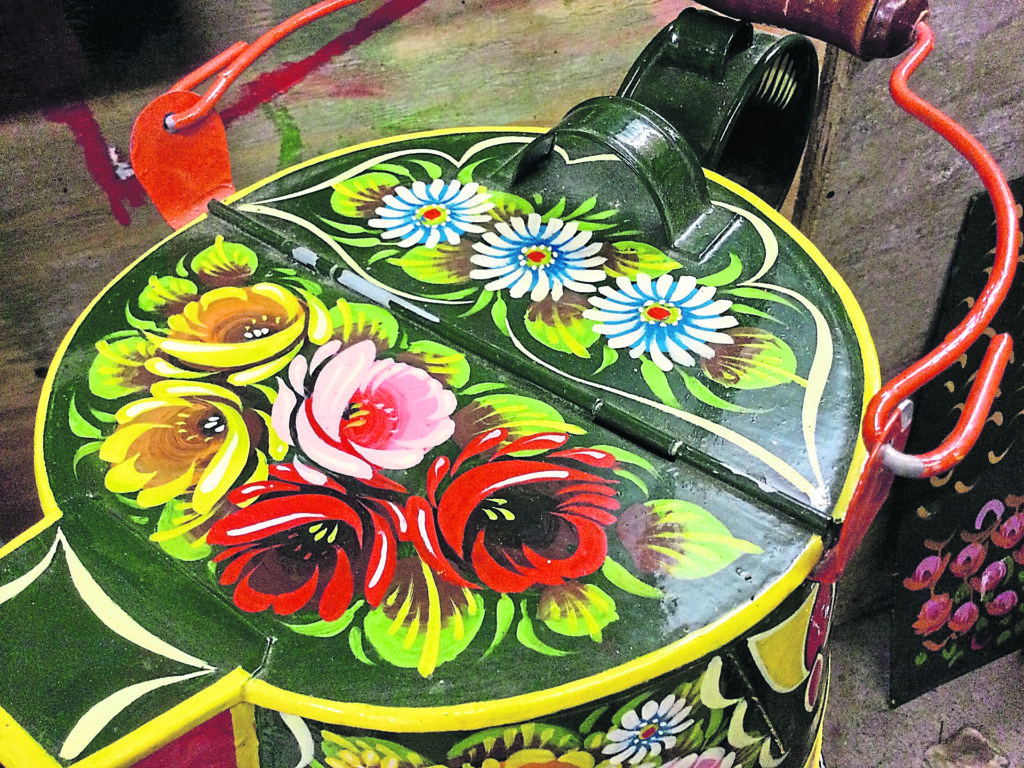Lucy Wood reports…
FOR more than 30 years, Phil Speight has perfected his skills as a traditional canal craftsman – and now, having been made an MBE by King Charles in this year’s Birthday Honours, he hopes the honour will help increase awareness of heritage crafts.
The recognition, he said, is a lovely acknowledgement’ of a career that has also seen him pass on his experience and knowledge to new generations of canal painters.

“It was a complete surprise,” he said. “I received a letter with ‘On His Majesty’s Service’ written on it and thought I’d done something wrong. I couldn’t believe it.
“I wasn’t allowed to tell anyone for five weeks until it was publicly announced. It feels strange, but a lovely acknowledgment.”
Starting out
Having trained as a coach painter in the 1960s, Phil fell in love with the distinctive folk art of the inland waterways and began his career in traditional canal art in the early 1980s, based successively in Skipton, at the Boat Museum at Ellesmere Port, Dadsford’s Wharf and Bollington Wharf. In the late 1990s Phil and his then wife Zita founded Craftmaster Paints, and although he has not owned the company for some years, he remains involved as a consultant. His work is held at the National Waterways Museum and in many private collections.
“I have studied and worked hard to paint in the ‘old-fashioned’ way,” he said. “I have a deep love of the infrastructure and architecture of the canal, the locks and majestic working boats, and the glory of the painting on them.

“I don’t have a style. It comes from study, and so what people did in the past down the years lives in my head and is in my consciousness. No two hands work the same, and no two brushes paint the same, which means the true craft has a wonderful flair and spontaneity. When it’s too neat and tidy, it doesn’t sing and dance. The humanity of it makes it.
“There’s so much more to it than just preserving boats for beauty. They are vibrant and functional and totally fit for purpose, compared with our disposable society today, and for me, it goes back to the sheer joy of it now. Nowadays, towards the end of my career, while I do paint for customers, I’m doing it as much for my own pleasure.”
Teaching
Specialising in authentic traditional decoration on boats and associated items like water cans and cabin stools, Phil also teaches, passing on everything he has learned about techniques and the history of the art form to students that have included some exceptional painters of the current generation, among them Meg Gregory and Bob Hegenbarth.
“When I see talent in a pupil, I do take them under my wing,” he said, “because it is important to nurture them and the craft. Some have shown astonishing aptitude, and I’m delighted at their successes.
“The canal was a working environment for working families with long histories. The canal meant everything to them, and painting was a way for them to distinguish themselves from others.
“Today is a totally different world. There are pockets of quality painters who preserve the art in its original form. Without them, it would be lost.”

Bradford born and today living in Macclesfield, Phil, who is 75, is now happily involved once more with the Boat Museum, where he is helping to create and implement a plan for the conservation, preservation and application of paintwork on the boats there. He has a particular connection to Gifford, having worked on Gifford’s paintwork for many years alongside leading painter, historian and author Tony Lewery.
And while painters like Meg and Bob credit him with being an inspiration, Phil in turn praises the work of Tony, who “has an incredible knowledge of painting and is a great authority.”
The music of the canals
Alongside his love of canals runs a love of music; he has played guitar since childhood, and he is currently putting a band together.
“I would have, without a shadow of a doubt, been a musician, but I knew I could make a living from painting, and it wasn’t so clear-cut with music,” he added. “The canal can become so much of your world that you forget there is another one. I love playing – it’s like therapy.
“People think that you sit by a canal in lovely countryside under bright blue skies painting flowers… I spent more time with an angle grinder. It’s graft and hard work, and not remotely romantic. In the past, it was a dangerous occupation, with poor conditions and low pay.
“But canals are very special places, and I hope the MBE is useful in reminding people of that. I have accepted it for my family and friends, and it has become a source of much mickey-taking in my local pub, where they held a party for me to celebrate.”
Phil was nominated for the MBE by national charity Heritage Crafts ‘in recognition of his unparalleled craftsmanship and tireless work in ensuring his skills are passed on to future generations.’ To find out more about his work, visit www.canaljunction.com/philspeight





